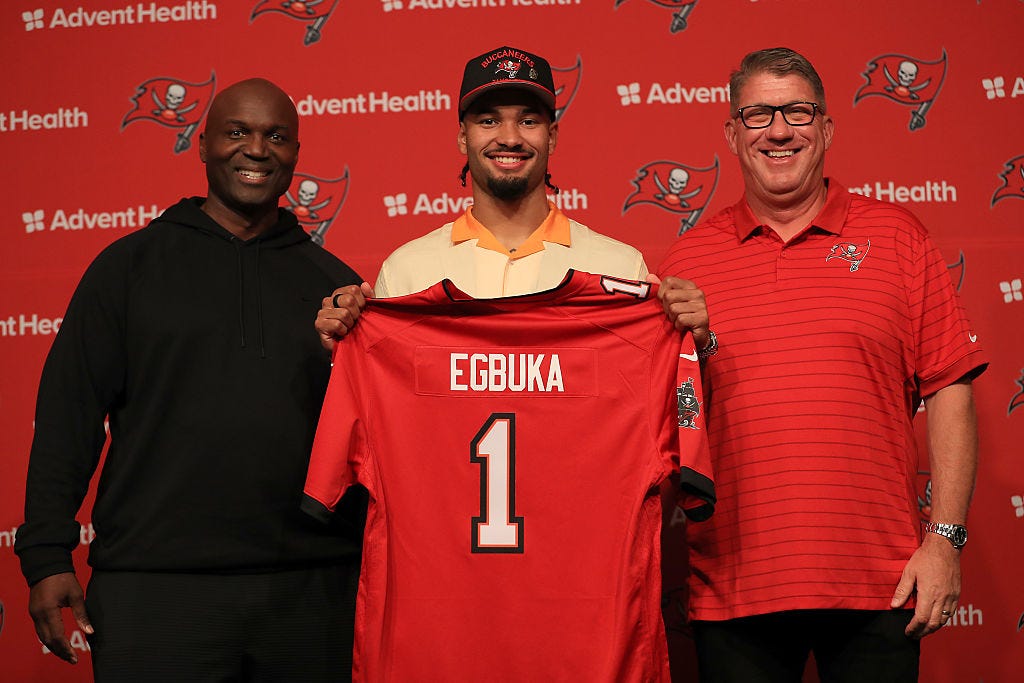The 2025 NFL Consensus Big Board Grades The Draft
The aggregated opinion of 112 draft analysts might not be what you want to hear, but I have it anyway. Using the ranks of the Consensus Big Board, what can we say about this year's NFL draft classes?
With the conclusion of the NFL draft, we have the ability to assess how teams added rookies to their roster using all of the information we have available to us. No approach is perfect, including this one, but we have the opportunity to leverage the collective wisdom of draft analysts to see which teams might have done the most to position themselves for success.
If you want to skip 4,000 words of exploration on this topic, click here to jump down to the grades.
If you want to see the ranks, check out this piece, which lists the Top 300.
The benefit to a project like the Consensus Big Board is that we can look back on previous classes and see if we were any good at figuring out good draft classes from bad.
The Consensus Big Board project was started with the idea that there is value in pulling together intellectually diverse approaches to evaluating college players and that we’d learn quite a lot by casting a wide net when it came to the extraordinary amount of information produced about the NFL draft.
Paul Noonan at Acme Packing Company did an excellent job capturing my thought process in his piece on the subject.
One of the best books ever written on aggregating data in order to make better decisions and predictions is The Wisdom of Crowds by James Suroweicki, and the consensus draft boards are almost textbook examples of smart data aggregation. The board concept itself is built on a simple but effective aggregation method, and it relies on contributors who are independent, who have a fierce diversity of opinion, and who bring specialized, local knowledge to the task.
Last year, those experts did a fantastic job identifying which players would end up drafted by NFL teams; no player was absent from the larger big board that informs the Top 300 and no player was ranked outside of the top 550 – a record.
That wasn’t the case this year, but it was still remarkably close. 2025 featured the second-latest pick for a player outside of the Top 300 of the Consensus Big Board – Chicago selecting Maryland linebacker Ruben Hyppolite II at 132nd overall. Hyppolite ranked 401st on the larger board.
The only time we saw a later pick for an “off-board” player was in 2020, when the New England Patriots selected Justin Rohrwasser at 159th overall.
Rorhwasser ranked 796th on the larger board, and the Patriots cut him in camp shortly after a cycle of news focused on his white supremacist tattoo, which had been discovered by Justis Mosqueda of Acme Packing Company during the draft and had been removed by Rohrwasser a few months later.
Only 25 players were drafted from outside of the top 300, the third-lowest total in the history of the Consensus Big Board; last year saw only 20 and 2021 only saw 23.
This could either mean that NFL teams are becoming more efficient at drafting or that analysts are becoming more efficient at identifying the prospects that are worth picking in the draft.
For what it’s worth, feedback from NFL scouting personnel tells me it’s most likely a mix of both.
Let’s look at why the Consensus Big Board has the ability to grade the draft, and then look at the grades themselves. Again, if you’d prefer to skip the validation, just click here to get right to the grades.
Can The Consensus Big Board Grade the Draft?
Last year, I looked at how the Consensus Big Board performed when compared to the NFL using the 2016-2021 draft classes, reasoning we haven’t had enough time to fully evaluate the 2022 and 2023 drafts.
Now, with another year in the books, we can add the 2022 draft class to the data.




